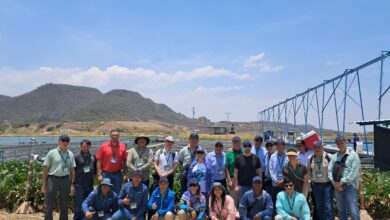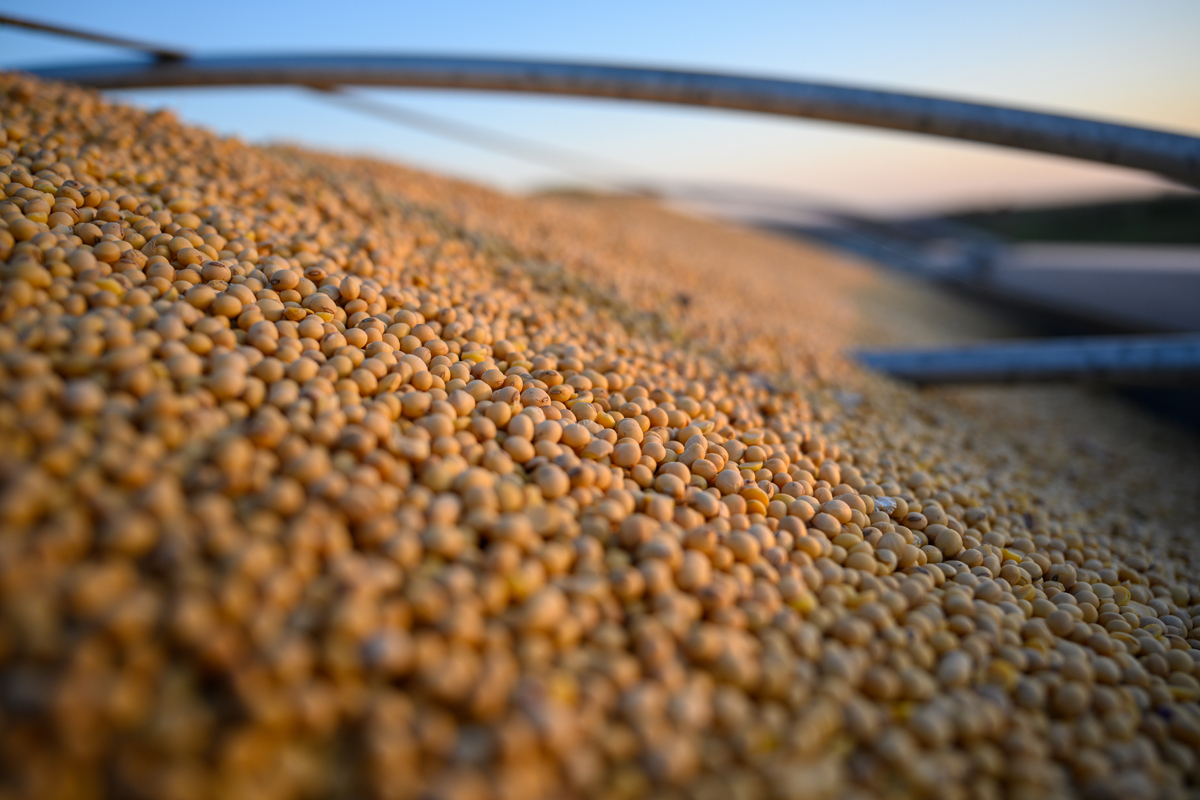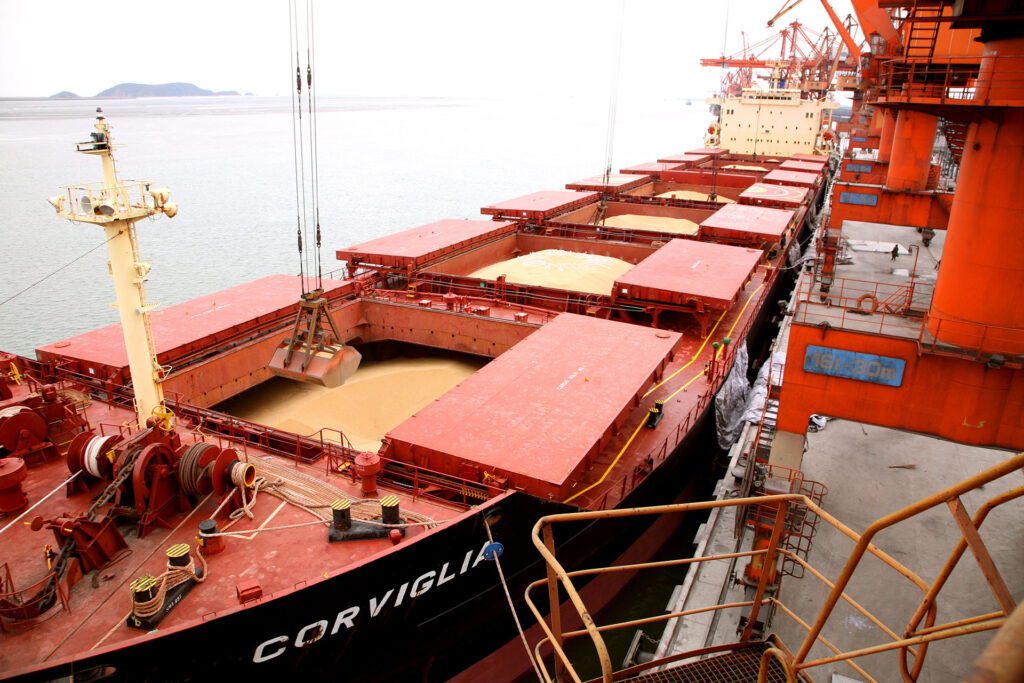

The U.S. Soy Advantage
Explore the benefits of soy from the U.S., delivering quality, reliability, nutrition, and sustainability for global animal feed, aquaculture, and human consumption.
Explore the benefits of soy from the U.S., delivering quality, reliability, nutrition, and sustainability for global animal feed, aquaculture, and human consumption.

Sustainability
Grown on existing farmland using sustainable practices, U.S. Soy has the world’s lowest carbon footprint.1 Backed by the U.S. Soy Sustainability Assurance Protocol, U.S. Soy supports eco-friendly solutions for soy food, animal feed and aquafeed.
Choosing U.S. Soy means supporting a system that helps preserve native ecosystems and forestland while protecting the environment. Learn more about the sustainability benefits of soy from the U.S.

Superior Quality
The benefits of soy shine through in U.S. soybeans, known for minimal damage due to natural drying and advanced storage. Sophisticated transport and port facilities ensure soybeans arrive with exceptional quality, maximizing nutritional value. Products from U.S. Soy – including soy foods, oil, soybean meal and aquafeed – benefit from the superior quality.
- Why U.S. Soy Stands Out: Our soybeans offer a superior nutritional bundle, with a 48% protein composition and a complete amino acid profile. Higher digestibility and metabolizable energy mean better feed efficiency and animal performance.
- Consistency That Saves: U.S. Soy’s uniform quality, backed by advanced processing, reduces variability in feed formulations. This consistency lowers safety margins, cutting costs for producers and boosting sustainability.
- Sustainable Farming, Superior Results: Grown with precision and verified by the U.S. Soy Sustainability Assurance Protocol, our soy supports your environmental goals while delivering top-tier nutrition for poultry, swine, aquaculture and human diets.
- Maximize Your ROI with U.S. Soy: From better feed conversion to lower costs, U.S. Soy’s superior quality delivers measurable returns across industries.
Whole soybeans grown in the U.S. exhibit less damage than soybeans grown in other regions of the world.2

Reliable Supply
International buyers can count on year-round availability from U.S. Soy, buoyed by efficient logistics and multi-port access. Our reliable supply chain gives you access to consistent, high-quality soybeans without delays.
- Unmatched Delivery Network: The U.S. soybean supply flows seamlessly via truck, train and ship through robust transportation routes. As a leading soybean supplier, we ensure your soybean supply arrives when you need it, minimizing delays and supply chain risks. This reliability reduces downtime and stabilizes costs, enhancing your profitability.
- Dependable Soybean Suppliers: Our network of trusted exporters guarantees a steady soybean supply for global markets. As your soybean supplier, U.S. Soy delivers consistent quality, backed by rigorous standards, so you avoid the hurdles of unreliable sources. This dependability translates to predictable feed costs and improved ROI for producers.
- Stay Informed: Access the latest market data and reports through our News & Insights section to make informed decisions about your soybean supply. Our transparent supply chain empowers you to plan confidently, maximizing efficiency and returns.
Secure your soybean supply
Partner with a trusted soybean supplier for reliability and value.
Nutrition and Health
U.S. soybean meal and oil showcase the benefits of soy in animal nutrition with high protein, superior amino acid profiles and digestibility. For human consumption, nutrient-dense U.S. Soy supports diets with products like tofu and protein bars.
U.S. soybean meal has, on average, a 48% protein composition.3
Soybean oil carries the U.S. Food and Drug Administration’s health claim confirming it may be able to reduce the risk of coronary heart disease.4
Soy protein is one of the few plant proteins comparable to animal protein containing all nine essential amino acids in amounts that meet human needs.5

Learn more about how U.S. Soy feeds the planet
1. Mérieux NutriSciences | Blonk, Agri-footprint *Results based on default emission modelling, including land use change emissions, according to the rules of the PEFCR-Feed guidance document (European Commission, 2018) as implemented in the Agri-Footprint 6.3 database. Input data rely on country average FAO statistics and other secondary sources. Supplier specific information would improve data quality and may provide differing results. Comparisons have not been reviewed in the context of ISO 14040/14044 compliance.
2. Huazhen Liu, Mohammad Gishini, Micah Pope, et al. Review of the Quality of Whole Soybeans, Soybean Meal and Oil Shipments. Authorea, September 27, 2022.
3. Van Eys, J. E. and Ruiz, Nelson. (2021). Quality Manual and Analysis for Soybean Products in the Feed Industry. Third Edition, U.S. Soybean Export Council, 23, 26-27, 31.
4. U.S. Food and Drug Administration
5. Stephan van Vliet, Nicholas A Burd, Luc JC van Loon, The Skeletal Muscle Anabolic Response to Plant- versus Animal-Based Protein Consumption1, The Journal of Nutrition, Volume 145, Issue 9, 2015, Pages 1981-1991, ISSN 0022-3166.

